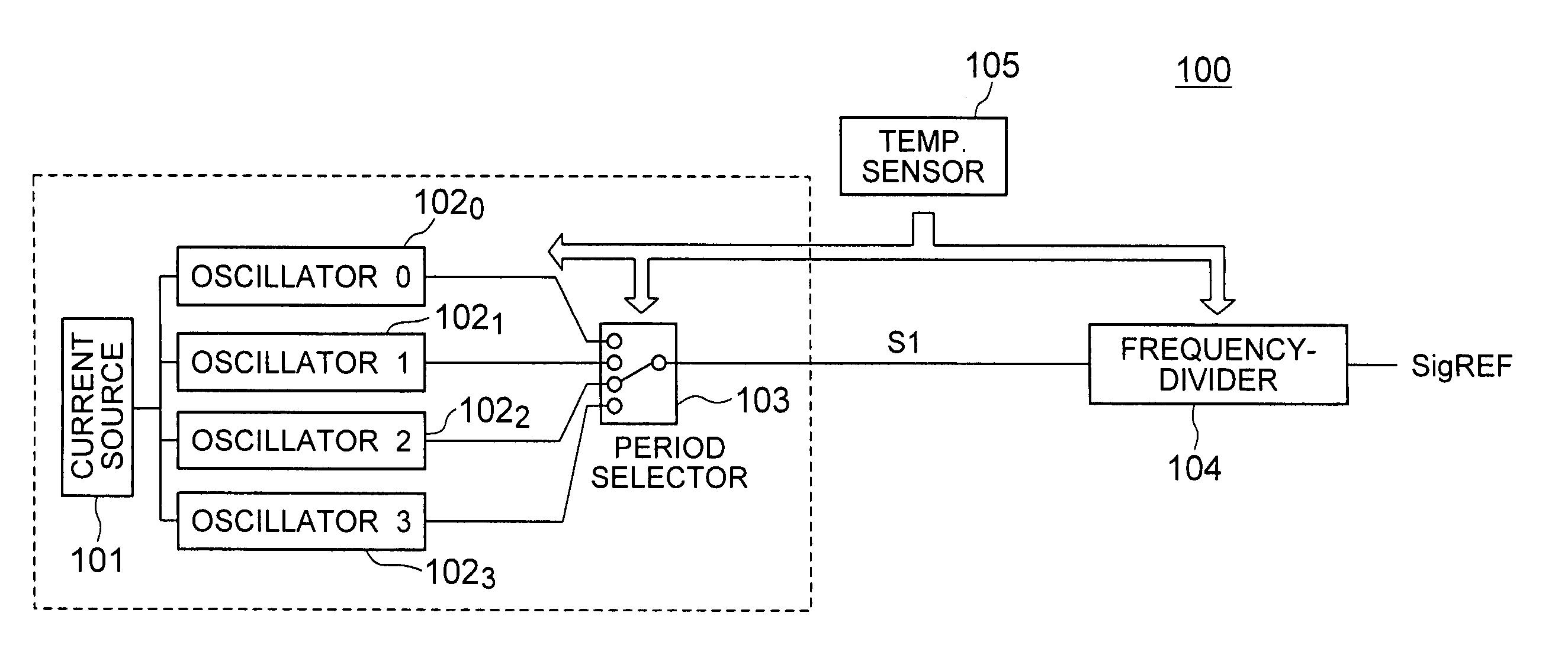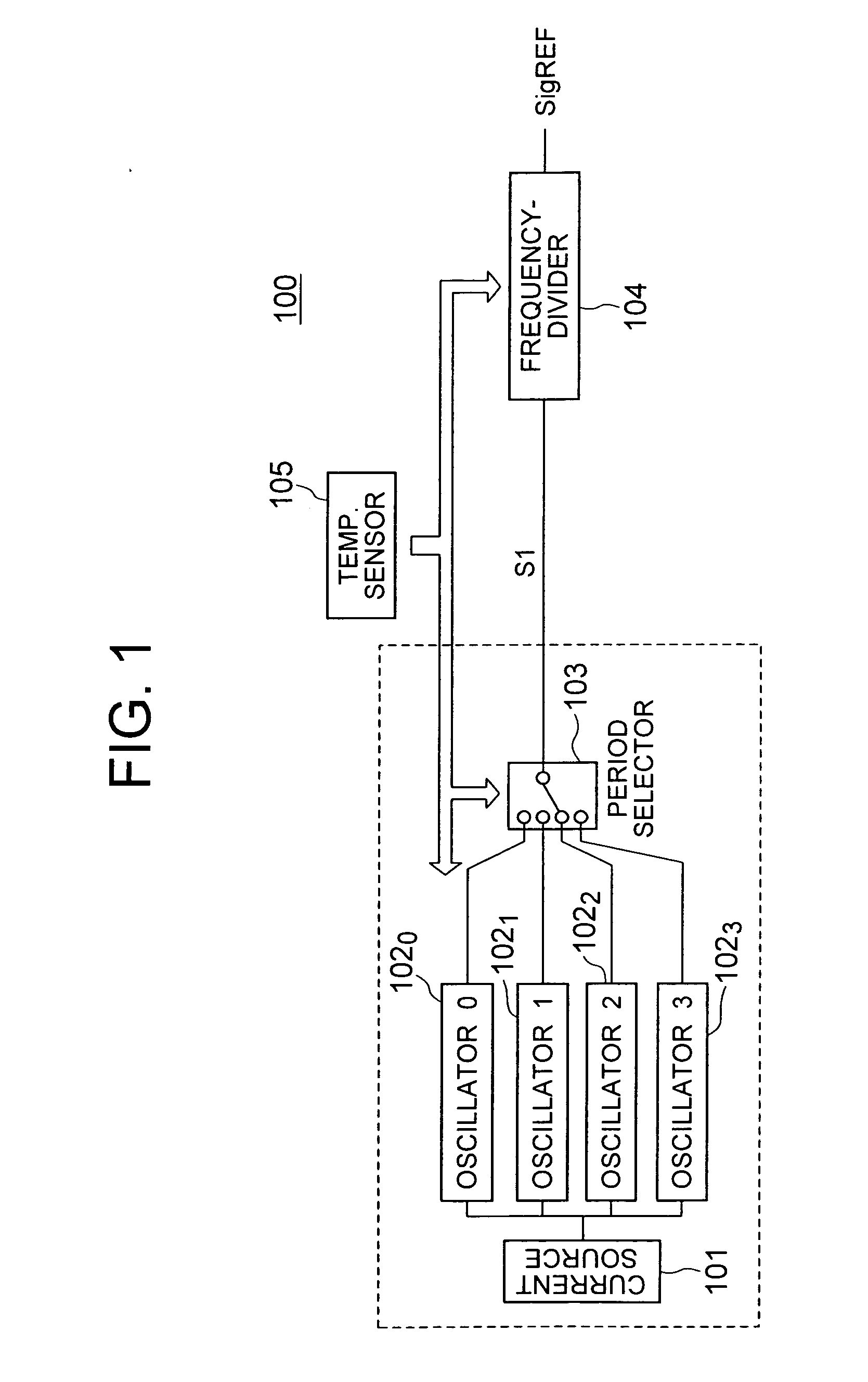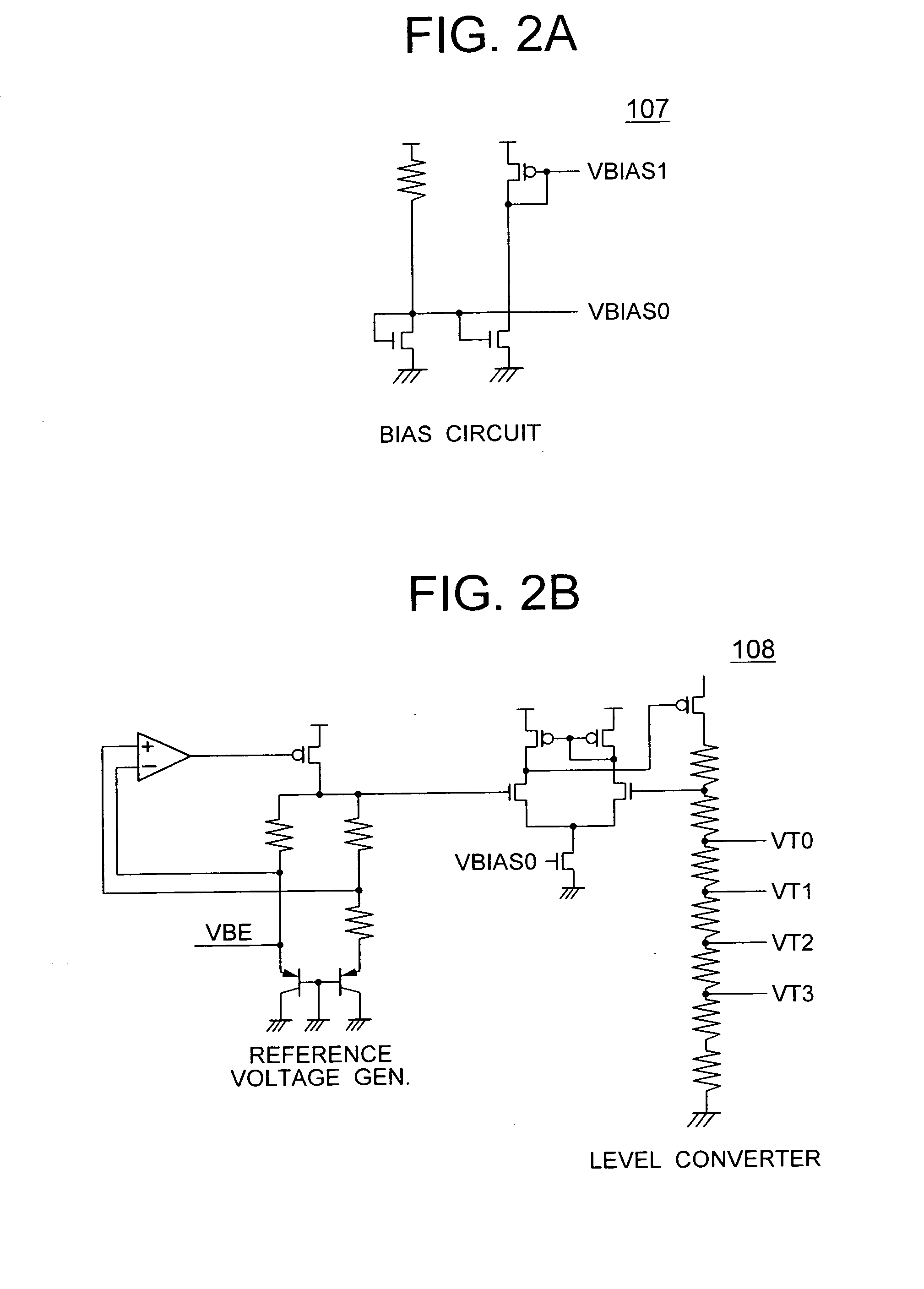Oscillator circuit having a temperature dependence
a technology of oscillator circuit and temperature dependence, which is applied in the direction of generator stabilization, modulation, information storage, etc., can solve the problems of increasing power dissipation, consuming battery working as a power supply source, and small margin for the required refresh period, so as to suppress a steep change in the profile of the period
- Summary
- Abstract
- Description
- Claims
- Application Information
AI Technical Summary
Benefits of technology
Problems solved by technology
Method used
Image
Examples
first embodiment
[0041] The oscillator circuit according to the present invention will further be described below with reference to the accompanying drawings. FIG. 1 shows a block diagram of an oscillator circuit 100 according to the present invention. As shown in FIG. 1, the oscillator circuit 100 includes a current source 101, oscillators 1020 to 1023, a period selecting circuit (oscillator selection unit) 103, a frequency demultiplication circuit 104, and a temperature sensor 105. The current source 101, oscillators 1020 to 1023, and period selecting circuit 103 in combination configure an oscillation unit. The oscillator circuit 100 may be mounted together with DRAM memory cells on a chip on which a general-purpose DRAM, a pseudo-SRAM, or a system LSI is arranged.
[0042] The current source 101 delivers a current having a current value depending on the ambient temperature. Specifically, a lower temperature provides a lower output current delivered from the current source 101. Each of the oscillato...
second embodiment
[0057]FIG. 8 shows a block diagram of an oscillator circuit 100a according to the present invention. The second embodiment is similar to the first embodiment except that the refresh period signal SigREF specifying a period which changes depending on the ambient temperature is generated using a plurality of current sources 101a0 to 101a3 and a single oscillator 102.
[0058] The current sources 101a0 to 101a3, a period selecting circuit 103a, and the oscillator 102 in combination configure an oscillation unit. Each of the current sources 101a outputs a current depending on the ambient temperature. The period selecting circuit (current source selection unit) 103a selects one of the plurality of current sources 101a in accordance with the temperature ranges based on the ambient temperature sensed by the temperature sensor 105, and supplies a current generated by the selected current source 101a to the oscillator 102. The relations between the current values of the respective current sourc...
PUM
 Login to View More
Login to View More Abstract
Description
Claims
Application Information
 Login to View More
Login to View More - R&D
- Intellectual Property
- Life Sciences
- Materials
- Tech Scout
- Unparalleled Data Quality
- Higher Quality Content
- 60% Fewer Hallucinations
Browse by: Latest US Patents, China's latest patents, Technical Efficacy Thesaurus, Application Domain, Technology Topic, Popular Technical Reports.
© 2025 PatSnap. All rights reserved.Legal|Privacy policy|Modern Slavery Act Transparency Statement|Sitemap|About US| Contact US: help@patsnap.com



